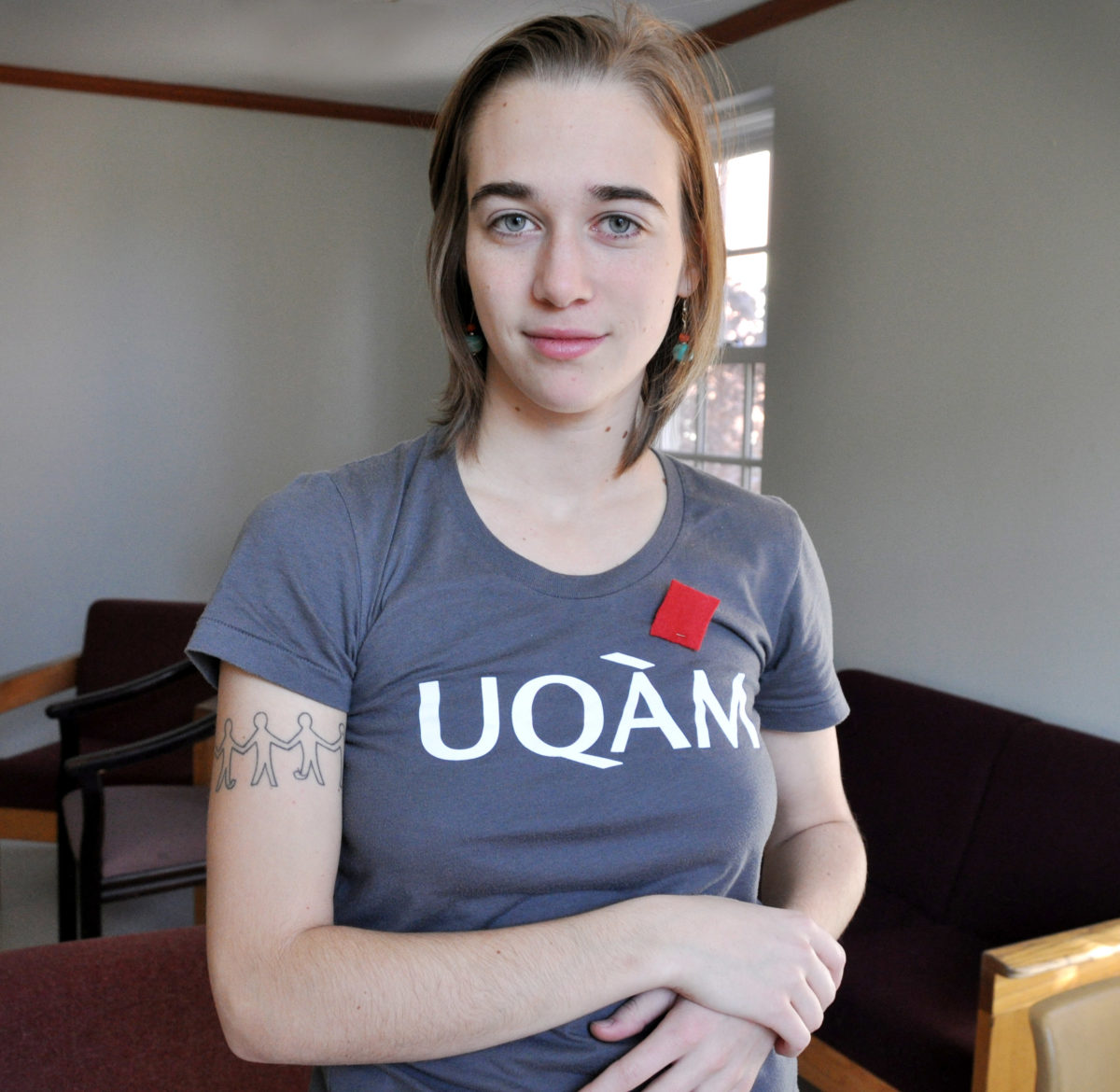
Gabrielle Desgagne was one of hundreds of students singing the famous, “Le peuple uni ne sera jamais vaincu.” They’d been protesting tuition hikes for more than three hours when the Montreal police arrived, throwing gas bombs and plastic balls everywhere.
“I can’t breathe,” the St. Thomas exchange student remembers shouting. After running through narrow and dark streets for 10 minutes, she found a dark space where she hid until police passed.
The cultural studies student from the Universite de Montreal doesn’t regret having engaged in the nightly protests that brought campus life to a halt for four months in 2012. For her, the protests represented a great political and cultural awakening – one she’s trying to pass on with her involvement with the Red T movement here at STU.
“Getting out of my little life circle, little desires and viewpoints made me more aware of what was happening and I learned to express what I think,” she said, from the calm of Fredericton where she continues to wear a red square that symbolized the protests. “I felt there was a huge amount of solidarity and people do want to change things. I’m grateful and happy to have had the opportunity to be part of the movement.”
•••
In February, rumours of a large tuition hike started in Quebec.
“All of a sudden, it happened and we had to pay it for the next year. It was too much for the cost of life and accessibility to higher education.”
Desgagne decided to get involved in student assemblies and for the first time started to ask questions about the political system.
“I started reading more information about politics and it made me think where I was at that point in that huge beautiful thing.”
During the spring and summer of 2012, student strikes spread across the streets and captured worldwide attention. Thousands of students performed artistic marches, naked marches and ironic songs. Government applied emergency laws to control protests and protect students who wanted to attend classes.
“There was red everywhere,” said Desgagne. “People used red squares to support the student cause. We did cacerolazos [banging pots and pans] every night and children would play instruments in the streets with their parents with orchestras all over the place.”
They also did backwards marches, an ironic way to say that students were moving backwards in the social and economic situation.
She recalls a carnival march where each person wore a colour with a meaning. She dressed in orange, wore a mask and danced with the crowd.
“We were 300,000 people in the streets. There was so much noise, music and dance. Grandparents, teachers and students were chanting, holding banners and playing musical instruments. I could see other streets crowded of people.”
•••
Sitting down in the cafeteria sipping her tea, Desgagne is quite aware of the huge political and cultural divide between Quebec and the rest of Canada.
She wonders what most students think about the movement. It can be hard to explain to English Canadians that the protests were much more than a pocketbook issue, that they represented a cultural and political awakening that hasn’t left her, she said.
Yet, she feels lucky to be here at a time when Denis Boulet and the Red T movement is questioning tuition and deals between the university and the province. She’s been working closely with him to infuse his movement with the spirit of the red square. She accompanied Boulet to a recent student political conference in Alma, QC and plans to keep in contact with Red T after she returns home.
“It’s nice to see how people are starting to question themselves about this issue here. This is a whole social movement that mobilizes people.”
“Mainly there was a social spirit that was raised and made a lot of people think. That will have an effect eventually. So, maybe fees weren’t reduced but people felt part of a group and had a sense of community,” she said.
“I thought supporting the cause was worth it.”
